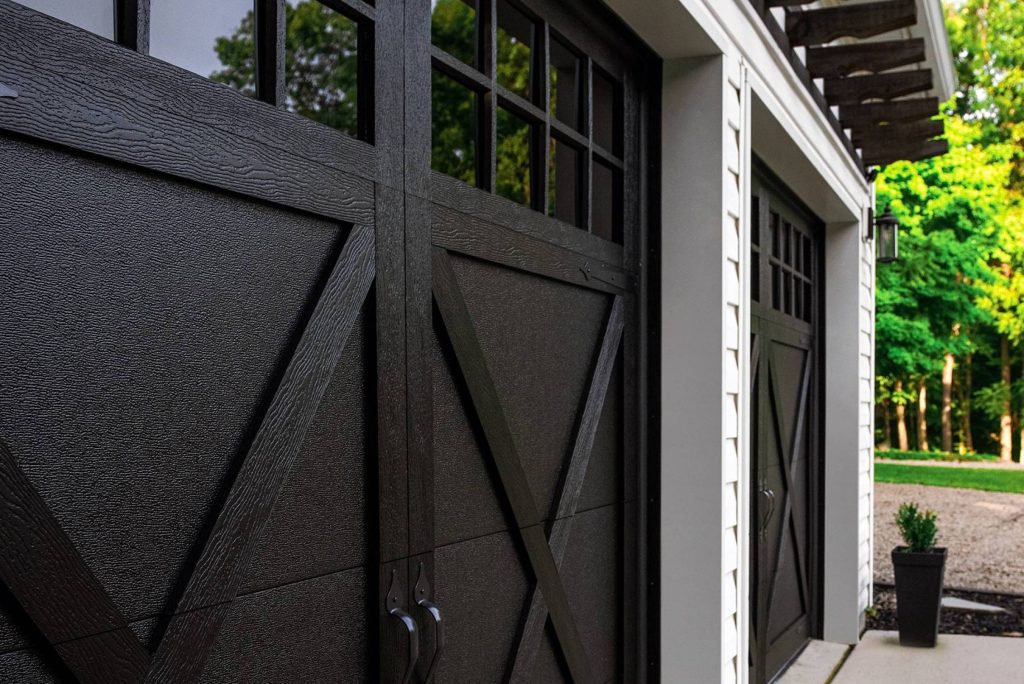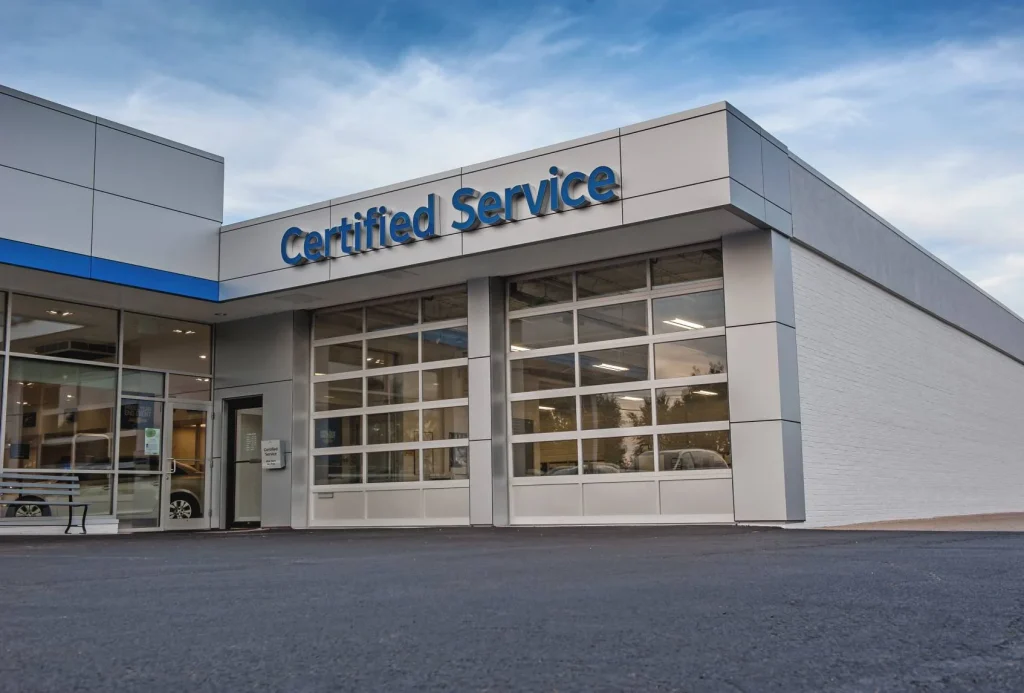Garage Door Torsion Spring in Center Line, MI
High-Performance Springs for Reliable Operation
Locally Based, Regionally Trusted
Since 2017
Schedule A Service Request
We Serve Businesses In And Around The Following Cities:
About Garage Door Torsion Springs
Understanding Garage Door Torsion Springs in Center Line's Commercial Properties
The Significance of Garage Door Torsion Springs in Commercial Settings
Garage doors are an essential component of any commercial property in Center Line. Their functionality is entirely dependent on the mechanisms associated with their operation, chief among them being the garage door torsion spring. These springs are the unsung heroes that facilitate the seamless operation of garage doors, ensuring that they lift and lower without a hitch. Without a properly functioning torsion spring, the garage door might become heavy, pose safety risks, or even halt commercial activities, impacting daily operations and logistics.
For the uninitiated, a torsion spring is a tightly wound mechanism designed to hold mechanical energy. When applied to garage doors, these springs enable the door to counterbalance its weight, making it easier to open and close. In commercial setups, where garage doors tend to be significantly larger and heavier than their residential counterparts, the role of torsion springs becomes even more critical.
Businesses in Center Line that rely on large commercial vehicles will find these springs indispensable. The seamless operation of overhead doors is necessary for timely loading and unloading of goods, emphasizing the need for a well-maintained garage door torsion spring system.
Exploring the Types and Functions of Torsion Springs
Understanding the intricacies of different types of torsion springs helps in selecting the right one for specific commercial needs. Typically, garages rely on either garage door torsion springs or torque springs, sometimes referred to as garage door coil springs, depending on the particular setup and requirement. An overhead door torsion spring is another type commonly used in commercial properties given their ability to support large doors efficiently.
The mechanics behind these springs ensure they accumulate energy when twisted, which is subsequently used to manage the door's weight during operation. This energy conversion is fundamental to preventing wear and tear on electric openers, reducing the need for constant repairs, thereby extending the garage door's lifespan.
The Process of Installing and Maintaining Garage Door Torsion Springs
Installing a torsion spring for a garage door involves precision and knowledge of the spring system. Professionals such as those at D&J Contracting in Center Line are adept at ensuring correct installation, which mitigates the risk of malfunction and promotes longer operational efficiency. The dangers associated with incorrect installation include sudden spring failure, which can lead to injury or property damage.
The installation process typically involves careful measurement of door dimensions, selection of appropriate spring size and type, and properly securing the spring to ensure balanced energy distribution. Continuous tension and weather-induced fatigue necessitate regular inspections and maintenance, which should be performed by experienced technicians.
The Benefits of Using Quality Garage Door Torsion Springs
Investing in high-quality garage door torsion springs for commercial properties in Center Line brings numerous advantages. These springs enhance the safety of the premises by ensuring stable door operation. Smooth functionality helps protect employees by reducing the risk of accidental door malfunctions which could otherwise potentially cause injury.
In environments where efficiency is paramount, robust torsion springs also reduce downtime. By facilitating the quick and reliable opening and closing of doors, businesses can maintain smooth logistical operations, whether for the arrival of fresh stock or the dispatch of finished goods. Moreover, quality springs are an economical choice over time, minimizing the cost associated with frequent repairs and replacements.
Real-World Applications and Success Stories
Many businesses in Center Line have seen the benefits of upgrading their garage door systems with cutting-edge torsion springs. Consider a local distribution center that struggled with constant operational hitches due to malfunctioning garage doors. After engaging with experts from D&J Contracting for torsion spring installation, the business noted a marked improvement in daily workflows.
The installation of efficient torsion springs enabled quicker loading times for delivery vehicles, reducing wait times and enhancing overall productivity. Such real-world applications exemplify how investing in the right equipment can yield significant operational benefits. Similarly, manufacturing hubs with varied material loading frequencies have benefitted from reduced wear and tear on supporting garage mechanisms, facilitating continuous activity without unpredictable stoppages.
Economic and Safety Aspects of Torsion Springs
From an economic perspective, garage door torsion springs help Center Line businesses manage maintenance costs effectively. By reducing component stress, the incidence of operational failures declines, thereby saving money on emergency repairs and new part replacements. Furthermore, these springs contribute to energy efficiency. By ensuring the door operates smoothly, less strain is exerted on automated openers, optimizing electrical use and further reducing operational costs.
Safety cannot be overstated when it comes to commercial operations. Well-installed and maintained garage door torsion springs significantly lower the risk of accidents. In a bustling commercial area like Center Line, where warehouse activity is relentless, safety is a perpetual concern. Preventative measures, such as regular spring inspections and timely replacements, are essential in protecting workers and safeguarding property.
Choosing the Right Professional Service for Installation
Selecting the right service provider is a critical step in ensuring long-term garage door efficacy. Businesses should look for providers with a proven track record of excellence and client satisfaction. D&J Contracting in Center Line offers a comprehensive service portfolio that includes expert consultation, installation, maintenance, and emergency repair services. Their local expertise ensures they're well-acquainted with the unique requirements of commercial clients in the area.
Collaboration with such experienced professionals means that businesses can optimize their equipment to meet specific needs, from handling oversized doors to ensuring high cycle capacity for frequent operations. Their insight allows for personalized service, catering to nuanced requirements of different businesses, thereby providing peace of mind with every installation.
In wrapping up this expansive guide, it's evident that garage door torsion springs are a linchpin in the functionality of commercial properties. Businesses in Center Line can capitalize on the benefits of well-maintained and expertly fitted torsion springs, ensuring they reap the rewards of efficiency, safety, and sustained equipment longevity. To fortify your garage door system, engaging with seasoned professionals is the advisable next step, ensuring optimal performance and business continuity. For all your torsion spring needs, consider reaching out to D&J Contracting, whose expertise offers a pathway to superior operational standards.
Garage Door Torsion Springs Gallery



Call Us Today to receive your Free Quote for Garage Door Torsion Spring in Center Line
Serving: Center Line, Michigan

About Center Line, Michigan
Historically, the land that Center Line came to occupy was swamp and wilderness until the early nineteenth century. As land became scarce, French, German, Belgian, and Irish immigrants began clearing the forests and draining the swamps. Center Line was known as "Kunrod's Corner" during the mid-nineteenth century. The theory is that the French named it "Center Line" because it was the middle of three Potawatomi trails from Fort Detroit to northern trading posts. The "center line" was the trail used from Detroit to Utica. The community received its initial start when Catholics decided to build a church so that they would not have to walk to St. Mary's in Detroit for Sunday Mass. This church (St. Clement's) was established in 1854 and attracted more Catholic settlers into the area. In 1863, the first general store was constructed by Joeseph Buechel. On July 19, 1878, Hieronymous Engelmann was the first postmaster, and he was succeeded in 1885 by Sophia Buechel. The "Centre Line" post office closed on July 31, 1906, and the name was restored to Center Line thereafter. In this era, street car tracks connected Detroit to Center Line along Van Dyke Road, and Ten Mile Road was the final stop of the street car. The village was incorporated in 1925 in the center of Warren Township, which is now the city of Warren, and was incorporated as a city in 1936.
Center Line is in southwestern Macomb County and is surrounded entirely by the city of Warren. It is 11 miles (18 km) north of downtown Detroit, 7 miles (11 km) west of St. Clair Shores, 6 miles (10 km) east of Royal Oak, and 11 miles (18 km) south of Utica. Interstate 696 runs along the northern edge of Center Line, with access from Exits 22 through 24. Highway M-53 (Van Dyke Avenue) runs north-south through the center of town, connecting Detroit and Utica.
According to the U.S. Census Bureau, the city of Center Line has a total area of 1.75 square miles (4.53 km), all land.
| Census | Pop. | Note | %± |
|---|---|---|---|
| 1930 | 2,604 | — | |
| 1940 | 3,198 | 22.8% | |
| 1950 | 7,659 | 139.5% | |
| 1960 | 10,164 | 32.7% | |
| 1970 | 10,379 | 2.1% | |
| 1980 | 9,293 | −10.5% | |
| 1990 | 9,026 | −2.9% | |
| 2000 | 8,531 | −5.5% | |
| 2010 | 8,257 | −3.2% | |
| 2020 | 8,552 | 3.6% | |
| 2023 (est.) | 8,354 | −2.3% | |
| U.S. Decennial Census | |||
As of the census of 2010, there were 8,257 people, 3,632 households, and 1,988 families residing in the city. The population density was 4,745.4 inhabitants per square mile (1,832.2/km). There were 3,920 housing units at an average density of 2,252.9 per square mile (869.8/km). The racial makeup of the city was 82.5% White, 12.0% African American, 0.4% Native American, 2.5% Asian, 0.1% from other races, and 2.5% from two or more races. Hispanic or Latino of any race were 1.7% of the population.
There were 3,632 households, of which 27.7% had children under the age of 18 living with them, 32.0% were married couples living together, 17.5% had a female householder with no husband present, 5.2% had a male householder with no wife present, and 45.3% were non-families. 40.2% of all households were made up of individuals, and 18.1% had someone living alone who was 65 years of age or older. The average household size was 2.22 and the average family size was 3.01.
The median age in the city was 41.2 years. 21.4% of residents were under the age of 18; 8.2% were between the ages of 18 and 24; 25.1% were from 25 to 44; 27.5% were from 45 to 64; and 17.7% were 65 years of age or older. The gender makeup of the city was 46.1% male and 53.9% female.
85.9% of residents 25 or older hold a high school degree. 10.8% of residents 25 or older hold a bachelor's degree or higher. Median household income was $30,752. 21.3% of the population lives below the federal poverty line.
As of the census of 2000, there were 8,531 people, 3,821 households, and 2,074 families residing in the city. The population density was 4,912.6 inhabitants per square mile (1,896.8/km). There were 3,916 housing units at an average density of 2,255.0 per square mile (870.7/km). The racial makeup of the city was 93.82% White, 3.09% African American, 0.25% Native American, 1.01% Asian, 0.26% from other races, and 1.57% from two or more races. Hispanic or Latino of any race were 1.51% of the population.
There were 3,821 households, out of which 24.2% had children under the age of 18 living with them, 36.8% were married couples living together, 13.7% had a female householder with no husband present, and 45.7% were non-families. 40.9% of all households were made up of individuals, and 22.5% had someone living alone who was 65 years of age or older. The average household size was 2.18 and the average family size was 2.99.
In the city, the population was spread out, with 21.8% under the age of 18, 6.9% from 18 to 24, 28.5% from 25 to 44, 20.5% from 45 to 64, and 22.4% who were 65 years of age or older. The median age was 40 years. For every 100 females, there were 81.5 males. For every 100 females age 18 and over, there were 75.5 males.
The median income for a household in the city was $31,677, and the median income for a family was $47,241. Males had a median income of $39,947 versus $26,487 for females. The per capita income for the city was $19,066. About 10.6% of families and 13.3% of the population were below the poverty line, including 17.9% of those under age 18 and 14.4% of those age 65 or over.
Most Center Line residents are zoned to schools in Center Line Public Schools, including Center Line High School. A small portion of the city is in Van Dyke Public Schools, served by Lincoln High School.
St. Clement Catholic School, of the Roman Catholic Archdiocese of Detroit, was in Center Line. It was established in 1857. It had 110 students in the 2009-2010 year, and then 12 teachers and 89 students in its final year, 2010-2011. The parish decided to close the school as a parish takes a greater share of the costs if the number of students is under 100.
The archdiocese operated St. Clement High School in Center Line. It closed in 2005. Macomb Christian Schools (MCS) occupied the old St. Clement High School building from 2017 until 2019, when MCS shutdown.
